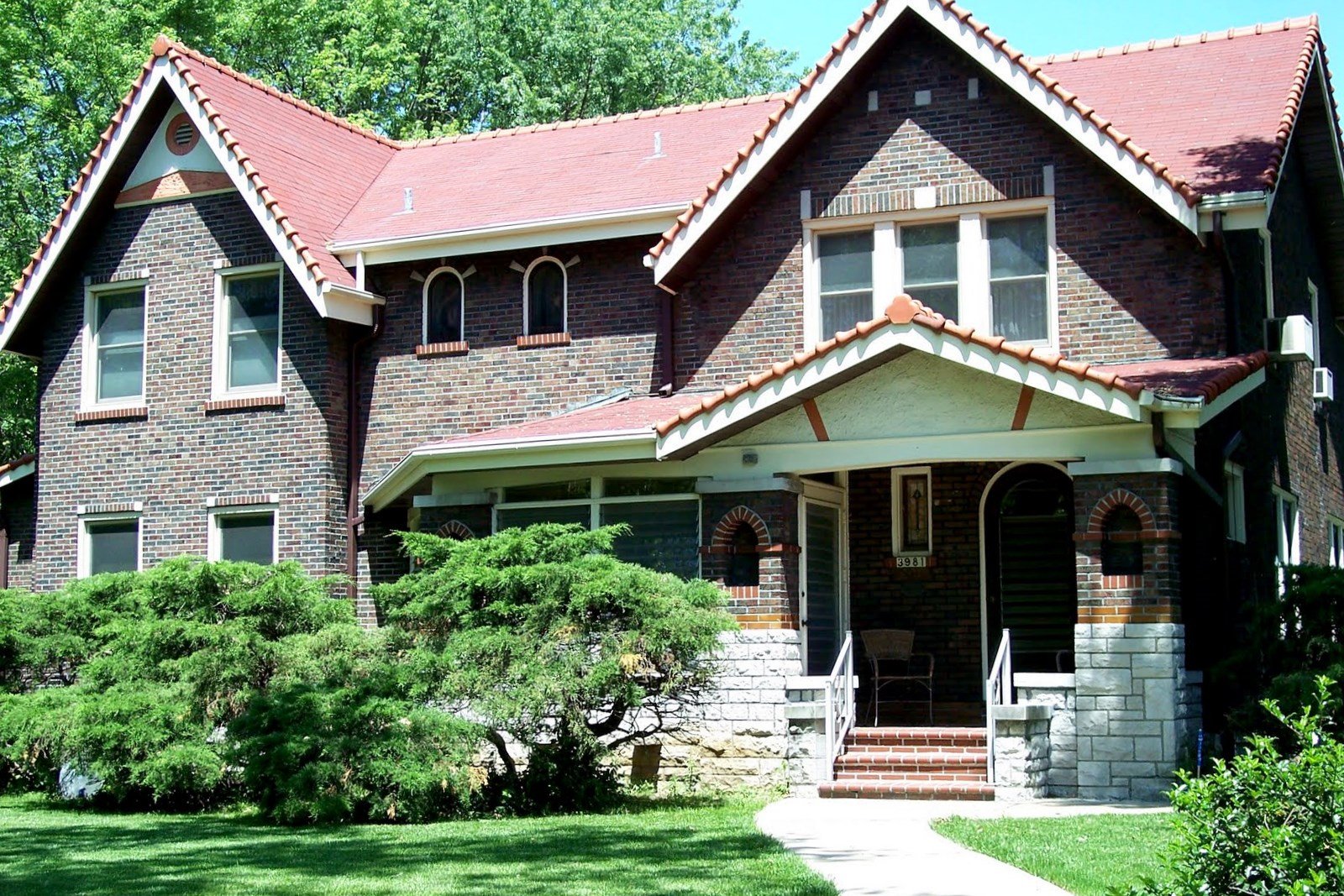#6929. Tudor mansion with brick facade and distinctive tiled roof
Before us stands a magnificent example of late Tudor-style residential architecture with elements of American Craftsman influence. This two-story mansion captivates with its characteristic deep brown brick facade contrasted with light-colored elements. Particularly notable are the pointed roofs with pronounced slopes, covered with red tiles, giving the structure an exquisite European appearance.
The facade composition is built on a harmonious alternation of vertical and horizontal lines. The vertical dimension is emphasized by tall gables and elegant rectangular windows with Tudor-style framing. The expressive texture of the brickwork creates a sense of solidity and quality construction—a technique that can be successfully implemented in modern facade design to create an atmosphere of reliability and respectability.
The portico of the main entrance deserves special attention with its characteristic gabled roof and light stone base. This detail is not only functional, protecting the entrance from bad weather, but also serves as an important accent element, giving the facade depth and volume. The elegant columns of the portico echo the decorative elements on the gables, creating a cohesive architectural ensemble.
The rhythm of window openings, with alternating single and paired windows, as well as arched elements on the facade, add expressiveness and romantic charm to the building. The landscaping with low-growing coniferous plants successfully complements the architectural composition, softening the rigidity of the brickwork and emphasizing the connection between the structure and its natural surroundings.
